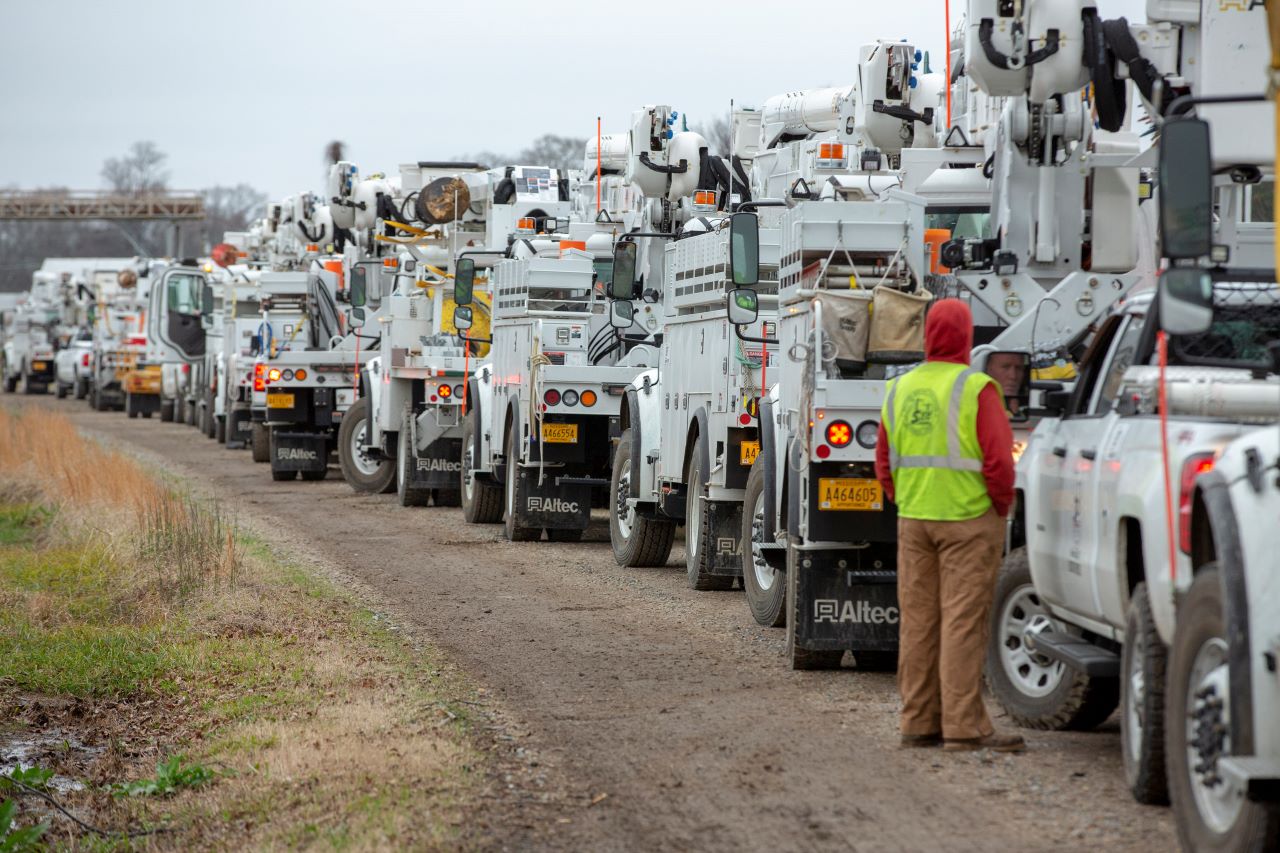Storm Center > Maintaining a Flexible and Effective Mutual Assistance System (EEI Electric Perspectives)
Maintaining a Flexible and Effective Mutual Assistance System (EEI Electric Perspectives)
08/01/2020

Mutual assistance, a hallmark of the electric power industry, has characterized successful responses to major incidents and disasters for decades. It draws on voluntary partnerships that allow impacted electric companies to access specialized equipment and skilled workers from unaffected companies to restore power safely and quickly. It is essential to restoration planning and is used regularly by investor-owned electric companies, public power utilities, and electric cooperatives across the nation.
Over time, the use of mutual assistance has evolved and matured to meet the changing nature and growing scale of the threats our industry faces. Hurricane Katrina (which devastated my state of Louisiana in 2005) and Superstorm Sandy (which struck the Northeast in 2012) showed that severe regional incidents can stress our mutual assistance networks beyond regional capabilities. Following those storms, it was clear our industry needed to examine and strengthen our approach for supporting major restoration efforts.
EEI’s member companies came together in 2013 to take a fresh look at how our segment of the industry approaches mutual assistance. As a result, the National Response Event (NRE) framework was created, giving investor-owned electric companies the tools, resources, and flexibility they need for responding to large-scale events. As part of the NRE framework, EEI member companies now can work quickly across the country to allocate crews and equipment—including, but not limited to, helicopters, drones, high-water vehicles, and transformer parts—until all restoration needs are met. The NRE framework scales individual company response capabilities to the national level, while enhancing the trust, partnership, and operational discipline inherent in the regional mutual assistance networks.
“Over time, the use of mutual assistance has evolved and matured to meet the changing nature and growing scale of the threats our industry faces.”
The historic 2017 hurricane season tested mutual assistance and the NRE framework. First, in August 2017, our industry responded to Hurricane Harvey, which cut power to more than a quarter million customers and brought devastating floods to parts of Louisiana and Texas. Using the NRE framework and the regional mutual assistance groups, EEI member companies helped to mobilize a restoration workforce of 10,000 lineworkers and support personnel that included crews from the impacted companies, as well as all segments of the industry.
Soon after completing the mission in Texas and Louisiana, our industry faced an even greater challenge. In September 2017, Hurricane Irma tore through the center of Florida, cutting power to 6.7 million customers— nearly two-thirds of the state’s customers. With the help of the NRE framework and the regional mutual assistance groups, impacted EEI member companies were supported by an army of more than 60,000 workers from across the United States and Canada that quickly restored power in Florida and other impacted states. It was one of the largest and most complex power restoration efforts in the industry’s recent history.
Since Harvey and Irma, our industry has continued to refine and supplement the NRE “toolbox.” We regularly update and enhance our online mutual assistance resource management tool, RAMP-UP. Last year, we implemented a two-tier system—a Level 1 NRE provides enhanced support for events that impact only one region, while a Level 2 NRE allows for a national allocation of resources for multi-region incidents.
More recently, the entire industry came together to ensure that our mutual assistance programs can continue to function despite the significant safety risks created by the COVID-19 global pandemic. During the early spread of the virus, many companies began examining how to respond to power outages safely during a health emergency. Every electric company wants to restore service as quickly as possible, but this only can be done if our employees, mutual assistance partners, contractors, and customers are appropriately safe.
In February, nearly a month before the World Health Organization declared a pandemic, several executives responsible for the NRE framework, led by Entergy’s Director of Incident Response Louie Dabdoub, started identifying mitigation and protection measures. As part of the evolving pandemic response, these NRE leaders brought their work to a mutual assistance “tiger team” stood up by the Electricity Subsector Coordinating Council (ESCC) to develop planning considerations for safely conducting mutual assistance. The team worked across all three segments of the industry to develop the COVID-19 Mutual Assistance Checklist, which was distributed in the publicly available ESCC Resource Guide and embraced by the industry.
“More recently, the entire industry came together to ensure that our mutual assistance programs can continue to function despite the significant safety risks created by the COVID-19 global pandemic.”
The checklist provides guidance for both requesting and responding companies on how to conduct mutual assistance missions safely during the pandemic. Among other recommendations, it outlines safe work practices, such as keeping crews from different companies or locations intact and isolated from one another; minimizing or downsizing staging sites; avoiding large meetings or briefings; and using technology for onboarding and information sharing. It also encourages crews to follow recognized COVID-19 health practices, including the use of personal protective equipment and ensuring plenty of separation between workers during meals and in lodging.
As we enter the peak of this year’s hurricane and wildfire seasons, the industry already has faced severe weather incidents, including most recently Hurricane Hanna, Tropical Storm Isaias, and the Midwest derecho, and has used the COVID-19 Mutual Assistance Checklist to send and receive mutual assistance support. During the April 2020 storms, companies like Entergy restored power for customers while also keeping crews separated and safe by using distributed staging sites and provided mutual assistance responders with lodging and site support services that met social distancing guidelines.
We have made these strides—and strengthened our approach to mutual assistance—because of the level of trust and communication our industry has built over the last decade. This culture of partnership across all segments of the industry has allowed us to adapt and change, regardless of the threat. As we look to the future, we know other events will arise to test our industry, and we are prepared to meet these challenges and our customers’ needs for reliable, affordable energy.
LEO P. DENAULT is chairman and CEO of Entergy Corporation, an integrated energy company that delivers electricity to 2.9 million utility customers in Arkansas, Louisiana, Mississippi, and Texas.
Article originally published in the July/August 2020 issue of EEI Electric Perspectives magazine.

